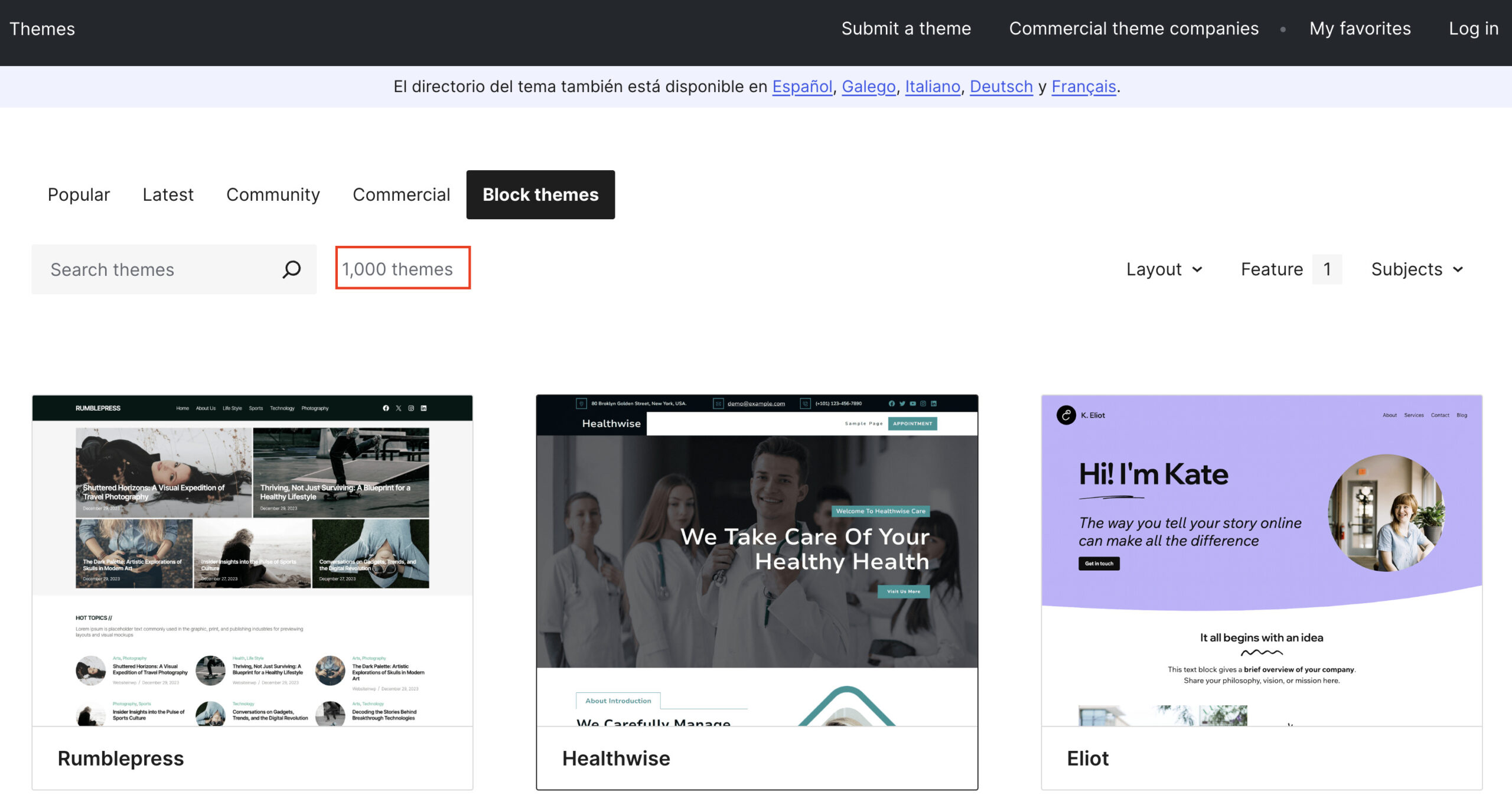
The WordPress Themes Repository has reached a significant milestone, now featuring over 1,000 block themes in its extensive library of 12,000+ free themes. Introduced with WordPress 5.9, block themes enable users to design, customize, and modify every aspect of their websites using the block editor, marking a transformative shift in WordPress site creation.
The Evolution of Block Themes in WordPress
Block themes were introduced as part of a larger movement toward full site editing (FSE), allowing users to control layouts, colors, fonts, and other design elements using WordPress’s block editor. This streamlined approach means site owners no longer need custom coding or third-party plugins to achieve extensive customization. With block themes, elements such as headers, footers, and sidebars are structured as blocks, empowering users to reimagine their sites’ layouts with ease and efficiency.
After the introduction of block themes in WordPress 5.9, they began gaining traction, although adoption was initially slow. By mid-2022, the WordPress Themes Repository hosted 100 block themes, a number that doubled to 200 by December of the same year. Despite this progress, some theme developers hesitated to embrace block themes due to unfamiliarity with the block editor’s framework and lingering doubts about widespread adoption. This slow start led to discussions within the WordPress community about how to encourage more creators to leverage block themes.
In response, the WordPress team took proactive measures, including adding a dedicated “Block Themes” filter on the Themes Repository homepage. This move made it easier for users to locate and experiment with block themes while also raising their visibility among site owners, designers, and developers.
Block Themes and Community Contributions
The first block theme introduced on the repository was Armando, crafted by developer Carolina Nymark. Armando marked the beginning of a new era in WordPress theming and set the stage for other developers to explore and contribute to the block theme landscape.
Today, Automattic is the leading contributor to the block theme category, with 116 themes in the repository, followed by Creta Themes with 41 themes. Ganga Kafle, a representative of the WordPress.org Themes Team, recently commented on the growing potential of block themes. “The themes team would like to see more block themes,” he stated. “We expect an influx of innovative designs and functionalities. The potential of block themes offers exciting opportunities for creativity and customization.” This enthusiasm reflects the team’s ambition to push the boundaries of WordPress design capabilities.
The themes team is also optimistic about seeing more varied designs, additional functionality, and greater creative freedom for users. These block themes are part of a larger WordPress initiative to expand user control over site design while simplifying the site-building process.
Positive Community Response to 1,000 Block Themes
The milestone of 1,000 block themes has sparked excitement within the WordPress community. Many users and developers alike have expressed their appreciation for the increase in options and the growing momentum behind block themes. Developer Remkus de Vries remarked, “It started real slow, but it seems we’ve finally got some momentum for Block Themes. Let’s see how long it takes for the next 1,000!”
Meanwhile, Jeff Chandler pointed out that although 1,000 block themes is a milestone, WordPress co-founder Matt Mullenweg’s initial goal in 2021 was to reach 5,000 block themes. Chandler tweeted humorously, “Back in 2021, Matt’s request was for 5,000 block themes, not 1,000 lol. Still a bit shy of that number.”
To celebrate the accomplishment, Automattic’s product wrangler Anne McCarthy published an article titled “WordPress Community Creates 1,000 Block Themes in 1,000 Days.” Her article highlighted the dedication and achievements of the WordPress community in reaching this milestone, while also acknowledging the challenges along the way.
Block Themes: Creativity and Versatility for WordPress Users
Block themes are becoming a preferred choice for WordPress users who want flexibility in design. Unlike traditional themes that often require custom code or reliance on external page builders, block themes provide users with native customization options through the WordPress block editor. This approach offers flexibility while maintaining a cohesive user experience.
One of the most appealing features of block themes is their use of global style variations and reusable design blocks. These tools allow users to create distinctive layouts and maintain a consistent design language across their site without duplicating efforts for each page or section. Developers and designers can use block themes to create sites that feel unique while still adhering to WordPress’s standards for ease of use and performance.
For developers interested in diving into block theme creation, there are several resources available to get started. Carolina Nymark’s guide to creating WordPress block themes is a widely recommended starting point. In addition, WordPress provides the Theme Developer Handbook and Learn WordPress tutorials for further support. There is also a collaborative community-driven repository called WordPress Community Themes, where developers can share insights and work on block themes together.
Angela Rogers